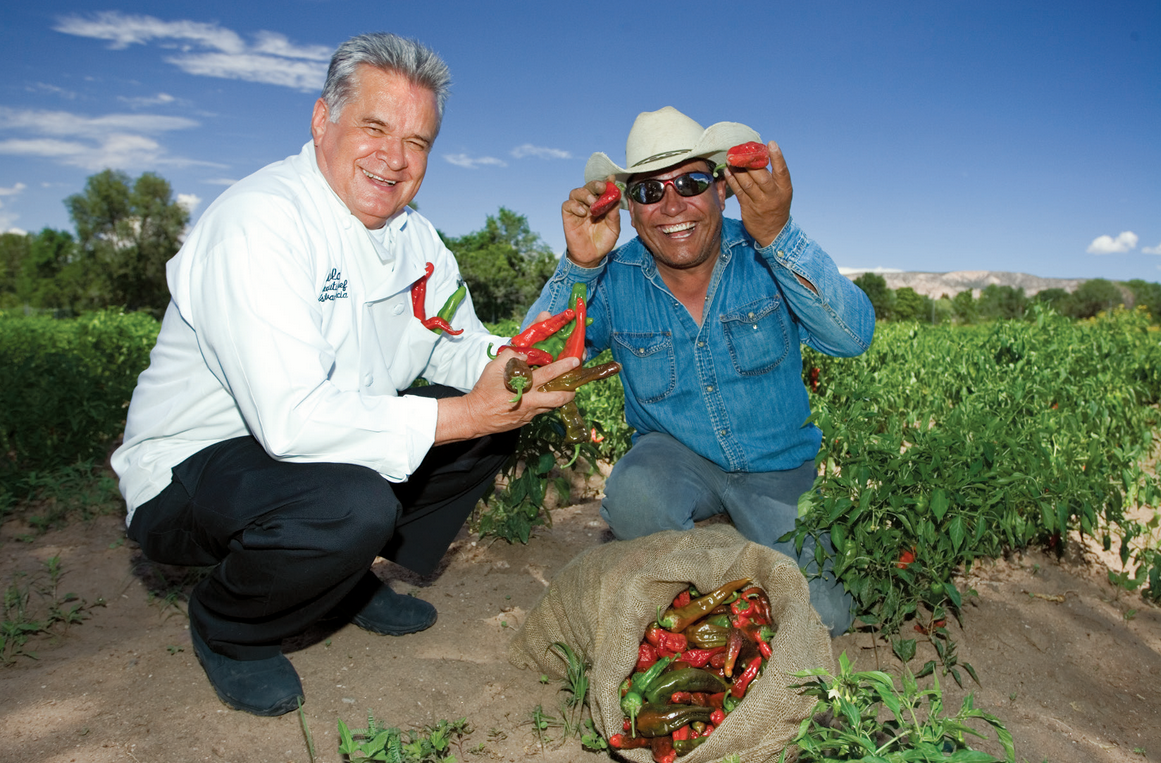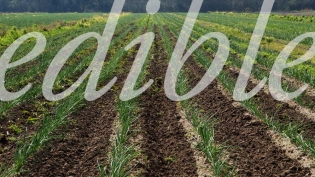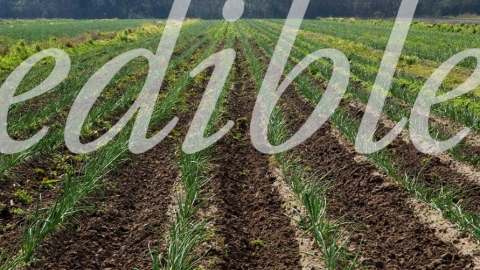Taste of Place: Chimayo, Espelette and Windsor Peppers
Three peppers, three places, each with a discrete tale of soil and sun, of weather and the hand-raising of crops, of chefs who swear by the unique flavors, yet each with a different history.
Chimayó, New Mexico, is a small rural community in the Chimayó Valley outside of Santa Fe, where crops are irrigated by a system of hand-dug waterways fed from three high mountain streams originating in the Sangre de Cristo Mountains: the Rio Quemado, Rio En Medio and Rio Frijoles. Corn, beans, tomatoes and peppers—all the New World crops—are grown here, alongside some figs and apricots brought from the Old World by Franciscan monks, but it is the indigenous Chimayó chili that speaks of the culture of place, scenting the air and flavoring the food of the region.
Native to these New Mexico highlands, the complexly flavored, medium-hot chili is grown from seeds saved through generations, still retaining some of its wildness, and its heat can vary from year to year and, some say, even from plant to plant.
Only a few hundred yards from the famous Sanctuary of Chimayó, claimed to be the Lourdes of North America, is a roadside stand cum market displaying wooden tables loaded with four different preparations of Chimayó chilies—ground in both smoked and plain versions and flaked in either large or small flakes—along with the religious statues and paintings.
Twenty-eight miles to the south in Santa Fe, the urbane center for art, jewelry, food and architecture, is the Hotel Chimayó de Santa Fe, just a stone’s throw from the city’s famous plaza. The hotel announces its cultural identity with ristras, long strands of deep red, slim Chimayó chilies hung across its entrance, in its dining halls and its interior arcade, celebrating the culture of the Chimayó chili.
Chef Estevan Garcia, formerly executive chef for both the Hotel Chimayó de Santa Fe and the elegant St. Francis Hotel, is a native son of Santa Fe and spent part of his childhood around Chimayó. His love of the region’s famous pepper is infectious and he convinced the hotels’ owners to contract with small farmers in Chimayó to ensure him a constant high-quality supply for his kitchen.
Gerald Hirigoyen, Marin resident and chef and owner of the acclaimed Piperade and Boccadillos restaurants in San Francisco, as well as the author of multiple books, is a loyal devotee of another famous regional pepper, this one the piment d’Espelette, a pepper grown for hundreds of years in the around the village of Espelette in the French Basque country. Hirigoyen is French Basque himself and was raised on the region’s distinct flavors, including that of the Espelette pepper, which has been granted AOC (Appellation d’Origin Controllée) status by France. The pepper, slightly smoky, complex and somewhat sweet rather than spicy and hot, is essential to the region’s specialty dishes such as Basque Chicken, seafood stews and piperade, a combination of sweet peppers, tomatoes and onions, often served with slices of local ham and topped with a poached egg.
Legend has it that a hungry wanderer, many hundreds of years ago, found food and hospitality at a farm near Espelette. The family was happy to share their soup and bread with him, but said the soup was cold because the fire was almost out. He pulled a packet from his sack, sprinkled on some powder and the soup became warm. They all enjoyed it, and the next morning the wanderer left the couple a packet of seeds, instructing them to plant them.
Other stories claim the pepper was brought to the region by a traveler returning from the New World. In any case, the pepper adapted well to the climate and soil of the region, and its mild, yet complex, slightly sweet flavor is known culinary circles worldwide. After harvest, which typically begins in midAugust, peppers hang in long strands from all kinds of buildings, literally creating facades of the fiery red peppers and a tourist attraction as well as a gustatory one. Of course, some of the peppers are dried less romantically, but still by hand, in special drying sheds. Once dried, the peppers are ground to a fine powder.
Hirigoyen not only uses the authentic Espelette peppers, but has also formed, with his wife, Cameron, IGO Foods in order to import the pure AOC piment d’Espelette for himself and for the general retail market, bringing the true taste of the French Basque country to local tables.
North of San Francisco, in Windsor, one of the wine grape areas of Sonoma County, thrives another pepper-growing region of repute. This one credits neither indigenous peppers nor imported ones, but the trial and effort and vision of the sister and brother team behind Tierra Vegetables, Lee and Wayne James. The duo comes from a flower farming family and Wayne, farming in the Potter Valley, was one of the early sellers at the Santa Rosa Famers’ Market. Wayne and Lee began farming together in 1979, focusing on a wide range of vegetables.
Over time, they discovered that chilies did especially well in their area, thriving in the same climate and soil that produces the excellent wines of the Sonoma region. “It’s the good soil, climate and healthy plants,” says Lee when asked why the chilies from their farm are so notable for their flavor. “The peppers mature slowly,” she says, “and then when they’re mature we don’t blast dry or sun dry them, but keep them out of direct light. And our peppers are fresh. We sell out each crop every year.”
The Lees cultivate more than 50 varieties of peppers, including Ancho, Paradiso (similar in flavor to Espelette), Anaheim and Red Guajillo. Tierra Vegetable chilies, both fresh and dried, are favored by many Bay Area restaurants.
If it is true that you can taste and remember a place through its food, then surely, with just a pinch of pepper, we can sense the Sanctuary of Chimayó and the cool clean air of the New Mexico highlands, inhale the aroma of aging cheeses and simmering stews of the French Basque Country, and smell the must of fermenting grapes and resinous redwood trees in Sonoma County.
Chimayo chimayo.us
Hotel Chimayo de Santa Fe hotelchimayo-px.trvlclick.com
Espelette espelette.fr (in French)
Piperade piperade.com
Boccadillos bocasf.com
Tierra Vegetables tierravegetables.com






